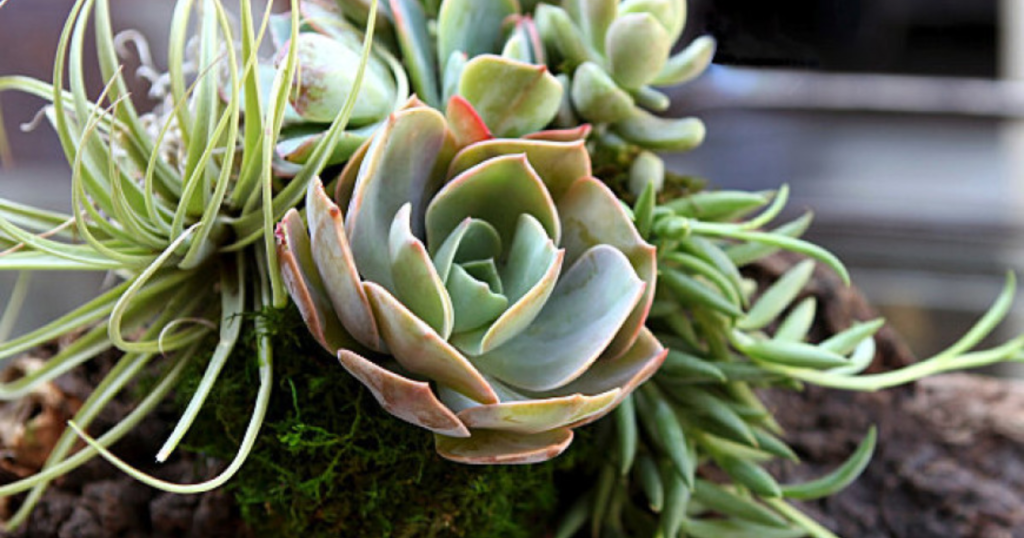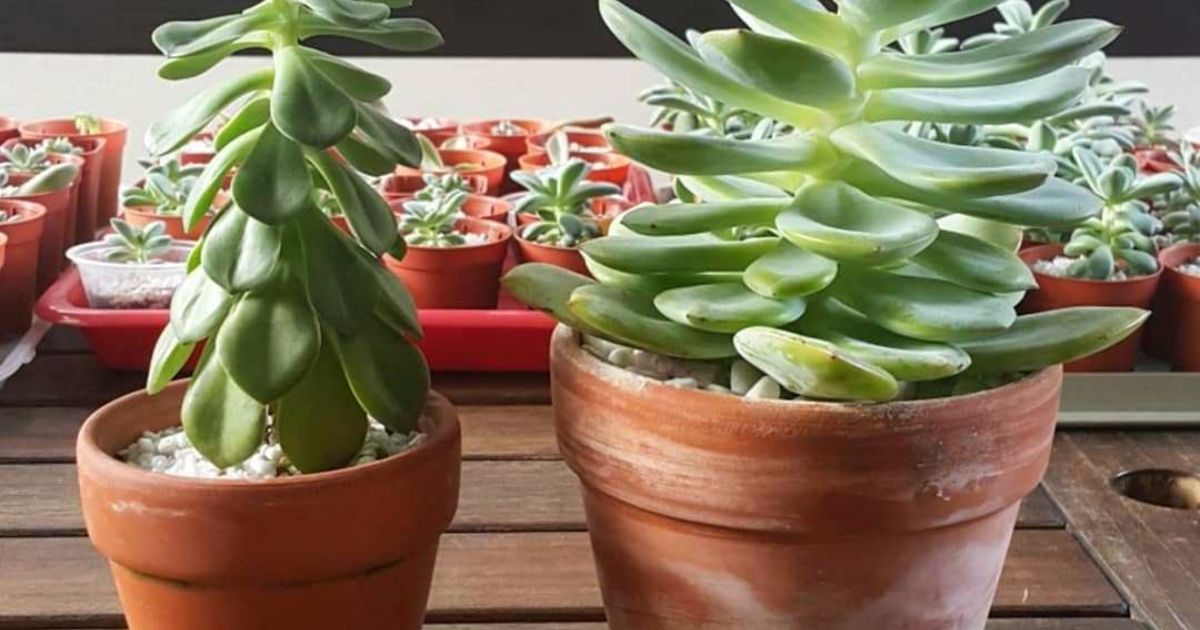A succulent develops a long stem when it’s not receiving enough sunlight, causing it to stretch in search of light. This phenomenon is known as. Inadequate light conditions trigger the plant to elongate its stem to reach sunlight, resulting in a stretched appearance. To promote a compact and healthy succulent, ensure it receives sufficient sunlight and consider adjusting its placement to a sunnier spot.
Curious about your succulent’s unexpected growth? Wondering, “Why is my succulent growing a long stem? Uncover the secrets behind this phenomenon and learn practical tips to nurture your succulent back to its vibrant, compact form. Let’s dive into the world of succulents and discover how a simple adjustment can transform your plant’s appearance.
When a succulent grows a long stem, it’s typically a sign of etiolation, caused by insufficient sunlight. Etiolation occurs as the plant stretches in search of light, leading to a leggy appearance. To remedy this, ensure your succulent receives proper sunlight to maintain a healthy, compact growth.
What To Do With Succulents With Long Stems
If your succulents have grown long stems, don’t worry – there are simple steps you can take to rejuvenate them. If you’re wondering, why are the leaves falling off my succulents pruning is a key solution. Firstly, prune the elongated stems by using clean, sharp scissors or pruning shears.
Trim the stems back to encourage new growth from the base, helping your succulent regain its compact shape. Ensure you remove any leggy or unhealthy leaves during the pruning process. This proactive approach not only addresses the issue of falling leaves but also promotes the overall health and vitality of your succulent.
Next, address the root cause of the stem elongation: insufficient sunlight. Place your succulents in a brighter location where they can receive at least 6 hours of indirect sunlight per day. Adequate light will promote healthier growth and prevent future stretching. With proper care and a bit of pruning, your succulents will bounce back to their charming, compact form.
Will Stretching Kill Your Succulents?

Stretching, or etiolation, won’t necessarily kill your succulents, but it can impact their health and appearance. When succulents stretch, it indicates they’re not getting enough sunlight, causing them to elongate in search of light. While it won’t lead to immediate death, prolonged stretching weakens the plant’s structure and may result in a less robust, less visually appealing succulent.
To prevent stretching, ensure your succulents receive adequate sunlight, typically at least 6 hours of indirect sunlight per day. If your succulent has already stretched, consider pruning the leggy growth and relocating the plant to a sunnier spot. This proactive approach helps your succulents thrive, maintaining their compact form and vibrant appearance.
Can I Revert Elongated Succulents?
Elongated succulents can be reverted with a few simple steps. First, relocate the succulent to a spot with more sunlight, allowing it to receive the necessary light for proper growth. Trim the elongated stems, promoting a more compact form and encouraging new, healthier growth. With a little care and attention, your succulent can bounce back to its natural, aesthetically pleasing shape.
Additionally, consider adjusting your watering routine. Overwatering can contribute to elongation, so allowing the soil to dry out between watering sessions helps prevent excessive stretching. By combining proper light exposure, pruning, and mindful watering, you can successfully revert elongated succulents and enjoy a more robust and attractive plant.
Propagating From Succulents With Long Stems
Interested in propagating succulents with long stems? It’s a straightforward process that begins by carefully removing healthy leaves from the elongated stems. Ensure the leaves are intact and let them dry for a day or two, allowing calluses to form. These callused leaves can then be planted in well-draining soil to sprout new succulent offspring.
Propagating from succulents with long stems not only rejuvenates the original plant but also provides an opportunity to grow new ones. This method is particularly useful if your succulent has experienced elongation due to insufficient sunlight. By propagating from healthy leaves, you can cultivate a collection of vibrant succulents that will thrive in optimal conditions, ensuring a beautiful and resilient display.
How To Avoid Succulents From Growing Long Stems
To prevent succulents from growing long stems, it’s crucial to provide them with ample sunlight. These sun-loving plants thrive in bright, indirect light, and placing them near a south-facing window or under grow lights can help maintain their compact shape. Adequate light exposure ensures that succulents receive the energy needed for healthy growth, minimizing the risk of elongated stems.
Additionally, a well-draining soil mix is essential for succulents. Planting them in a mixture that allows water to pass through quickly helps prevent overwatering, a common cause of leggy growth. By combining proper lighting and well-draining soil, you can create optimal conditions for your succulents, keeping them beautifully compact and vibrant.
| Key Points | Description |
| Etiolation Indicator | Succulent’s long stem signifies etiolation due to low sunlight. |
| Remedy: Adequate Light | Ensure proper sunlight to prevent stretching and maintain health. |
| Compact Growth Goal | Adjust placement for a vibrant, compact succulent appearance. |
| Understanding Etiolation | Recognize the phenomenon for proactive care and optimal growth. |
What Do You Do With Long Succulent Stems?
When faced with long succulent stems, consider pruning them to encourage a more compact and bushy growth. Use clean scissors or pruning shears to snip the stems just above a leaf node, allowing new growth to emerge. You can propagate the trimmed stems by letting them dry for a day or two before planting them in well-draining soil. T
Alternatively, those trimmed succulent stems need not go to waste. Transform them into a DIY succulent arrangement or centerpiece by placing the cuttings in a decorative pot with fresh soil. With a bit of creativity, you can turn those long stems into a charming display, adding a touch of greenery to your home.
How Do You Keep Succulents Happy Indoors?
To keep succulents happy indoors, start by providing them with plenty of sunlight. Place them near a sunny window where they can receive at least six hours of bright, indirect light daily. Additionally, ensure proper drainage for their pots, as succulents dislike sitting in waterlogged soil.
When it comes to watering, allow the soil to dry out between waterings, as succulents are adapted to arid conditions. Overwatering can lead to root rot, so it’s crucial to strike a balance. Use a well-draining soil mix, and water only when the top inch of the soil feels dry. With these simple care tips, your indoor succulents can thrive and bring a touch of nat
Which Succulents Are Good For Stretching?
Some succulents are naturally more prone to stretching, seeking out sunlight with a unique growth habit. Echeveria and varieties, for instance, may elongate in low-light conditions. If you’re aiming for a more compact growth, consider placing these succulents in well-lit areas to discourage stretching and promote their distinctive rosette forms.
On the other hand, certain succulents, like Sedum and Sempervivum, are known for their ability to stay compact even in lower light conditions. Opting for these varieties can be a great choice if you want low-maintenance plants that maintain their shape without stretching. Keep in mind the specific light preferences of each succulent type to create an ideal environment for their grow
Which Succulents With Long Stems Are Best
Choosing the right succulents with long stems depends on your preferences and care routine. Some popular choices include the Burro’s Tail which features trailing stems adorned with plump, bead-like leaves.
Additionally, the String of Pearls is a charming succulent with cascading, bead-like leaves resembling a string of pearls. The unique appearance and ease of care make it a favorite among succulent enthusiasts. When selecting succulents with long stems, consider factors like the available light in your space and your watering routine to ensure they flourish and enhance your indoor or outdoor environment.
What Do Brown Tips On Succulents Mean?
Brown tips on succulents often signal overwatering or poor drainage. When the roots sit in waterlogged soil, they can’t absorb nutrients properly, leading to browning at the tips. To remedy this, adjust your watering routine and ensure the soil allows excess water to drain away.
In some cases, brown tips may also result from underwatering or excessive sunlight. Succulents thrive in well-draining soil and require a balance of sunlight. If the tips turn brown, assess your watering frequency and consider providing filtered sunlight to prevent further stress on the plant.
FAQ’s
Why do the tips of my succulents turn brown?
Overwatering or poor drainage may lead to brown tips on succulents, as waterlogged soil affects nutrient absorption.
Can underwatering cause brown tips on succulents?
Yes, insufficient watering or prolonged exposure to intense sunlight can also result in brown tips, stressing the plant.
How do I prevent brown tips on my succulents?
Ensure well-draining soil, adjust watering frequency, and provide filtered sunlight to maintain a healthy succulent appearance.
Are brown tips a sign of a serious issue with my succulents?
While not always severe, brown tips indicate stress. Adjust care practices promptly to promote the succulent’s well-being.
Can I trim the brown tips off my succulent?
Yes, you can trim brown tips with clean scissors, but addressing the underlying cause, like adjusting watering, is crucial for long-term health.
Conclusion
In conclusion, understanding why a succulent develops a long stem is pivotal for ensuring the health and vitality of these unique plants. The elongation, often referred to as etiolation, occurs when succulents don’t receive adequate sunlight. This stretching is a natural response as the plant seeks light, leading to an elongated appearance. This phenomenon allows plant enthusiasts to take proactive measures to rectify the situation and restore their succulents to a more compact and visually appealing form.
To address the issue, it is essential to provide the succulent with the right amount of sunlight. Placing it in a sunnier spot or adjusting its position to maximize exposure can make a significant difference. By taking action to meet the plant’s light requirements, enthusiasts can curb the elongation process and encourage healthier, more robust growth. This simple adjustment can have a profound impact on the overall aesthetics and well-being of the succulent, ensuring it thrives in its environment.










